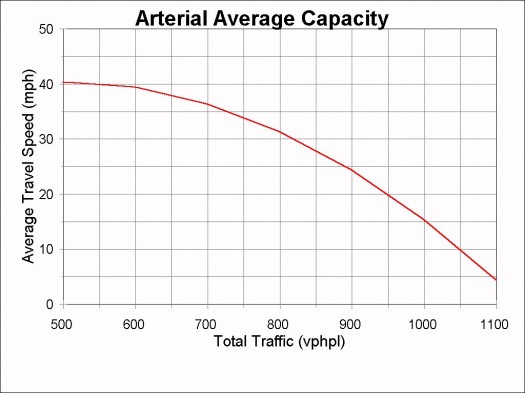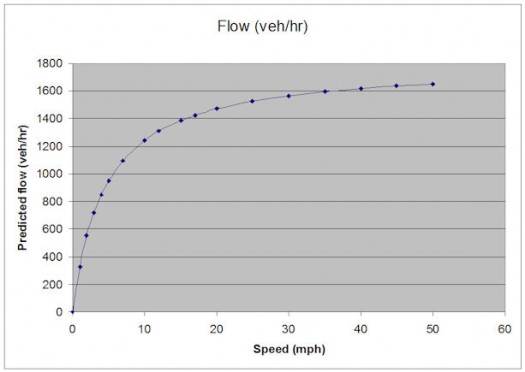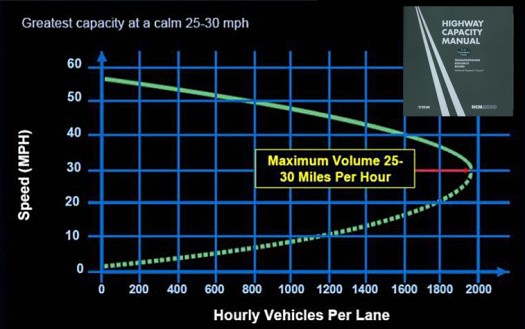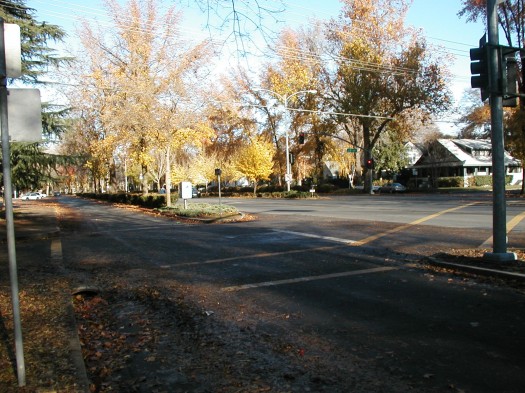A Placemaking Journal
Walkable Streets II: The Documenting
 This time last week, I was considering common issues associated with walkable streets and mentioned that 35-40kph (25mph) moves the most traffic. I didn’t even think about it as I wrote it. As something long-embedded in my brain, I just said it. Matter-of-factly.
This time last week, I was considering common issues associated with walkable streets and mentioned that 35-40kph (25mph) moves the most traffic. I didn’t even think about it as I wrote it. As something long-embedded in my brain, I just said it. Matter-of-factly.
Readers took me to task, wanting to know the source.
I had to dig back into my urban design thesis to find what actually shows a deduction derived from multiple sources, keeping in mind that predicting and studying human behaviour is a social science. The exact reference for 27mph has not turned up yet, but here is the rationale and some supporting material that gets you in the neighborhood.
1. The first source is a graph that was widely published in the book “Traffic Engineering” for Arterial Average Capacity that plots Average Travel Speed against Total Traffic (Vehicles Per Hour Per Lane VPHPL). The findings show that, at 40mph, you get about 500VPHPL, at 30mph around 820VPHPL, and at 10mph 1050VPHPL. The observable reason for this is that as cars speed up, they spread out. This data, as presented, suggests a free-flow condition.
2. A second graph in this Transport Policy post creates a great rationale for 20mph speed limits being the future of urban transport. The graph, Figure 4, also plots predicted traffic flow against speed. What’s interesting here is that after 20mph, there is really very little difference in additional capacity per lane, levelling out at 50mph. 25mph fits in nicely here as well.
3. Once this post went live, I received still another graph — this one from the Transportation Research Board’s “Highway Capacity Manual” via Community Builders San Bernardino — demonstrating similar phenomena and settling in on a similar range of speed.
4. “The Boulevard Book” by Jacobs et al. is must read… a MUST OWN. One of their key precedent studies is a street called “The Esplanade” in Chico, California. This is the major route leading from the city’s Downtown, a multiway boulevard built in the 1920s. Not only does it move lots of traffic elegantly and efficiently at 25mph, it has desirable real estate — commercial, single family homes, multi-family homes, and schools — directly facing it. Now, when you go down a mile from the downtown, the street turns into an “arterial,” presumably carrying the same traffic at 40 mph. The first thing you do is sit at a light with a bunch of other drivers amidst a horrible, nightmarish suburban shopping center scene. A more expensive street than its older brother (the Esplanade), it behaves so badly that it diminishes property values and human happiness at every intersection. Now, I don’t need a book to tell me this, as I’ve have worked there on a number of occasions and can speak from experience.
5. Intersections: So, we have determined that lower speeds can support comparable, if not more, vehicles per lane. Any traffic engineer will tell you that actual capacity is really constrained at intersections. So here is the last piece of data. You can only fully realize the advantages of lower speeds in free-flow conditions. This only happens in two ways: 1. On high speed thoroughfares, which are not conducive to a walkable street environment; and 2. Where you can time your lights. This is where 40mph more than fails… in that after your 40mph free flow, the light turns red and you sit through a light cycle. Once it turns green, the stacked cars slowly move forward, spreading out one by one to reach 40mph+ just in time to hit the next light. In urban situations, with lots of intersections and on major thoroughfares, and at 25mph, you can effectively time the lights for a periodic free-flow condition for most hours of the day. This is how the Esplanade does it, and actually so do many downtowns throughout North America. And during peak hours, yes, they get congested. Just like arterials.
But at least the pedestrians, bikes, and transit can still do their thing. That alone tips the scales.
If PlaceShakers is our soapbox, our Facebook page is where we step down, grab a drink and enjoy a little conversation. Looking for a heads-up on the latest community-building news and perspective from around the web? Click through and “Like” us and we’ll keep you in the loop.






